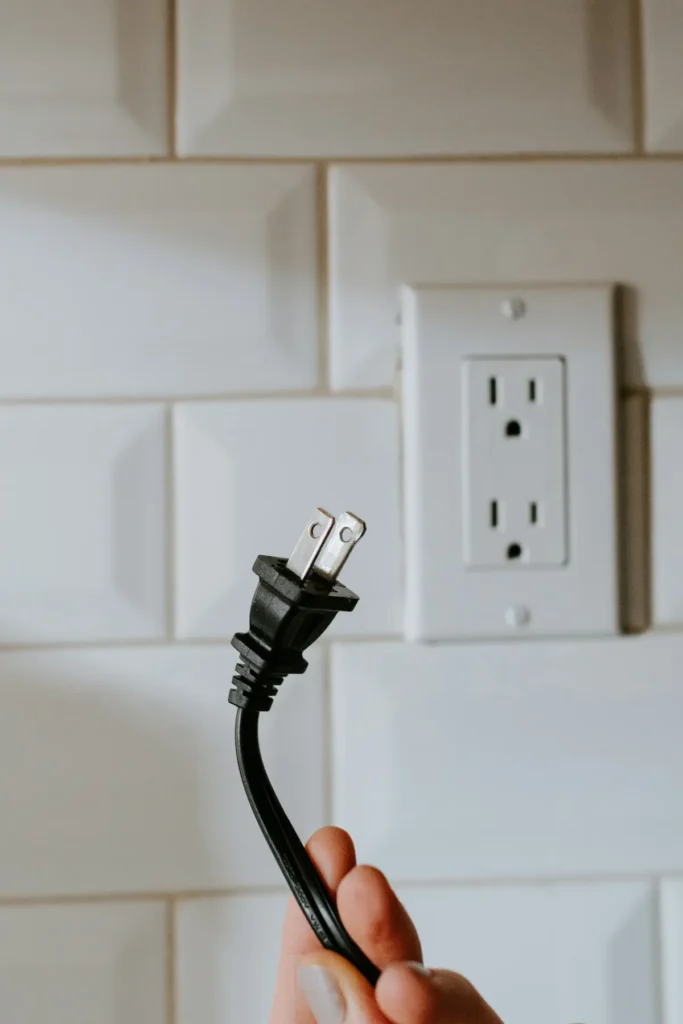How Long Should A Power Cord Be?
Many consider three feet the ideal power cord length for connecting indoor appliances.
There are two assumptions here.
The first is that each room in your home or office has a wall socket or an extension cord. The second assumption is that the equipment that needs to be powered is already stationed close enough to the main outlet or extension cable. Therefore, a 3-foot power cord would likely bridge the gap between the device and the nearest electrical socket.
However, the three-foot power cord rule has several weaknesses. Most notably, it doesn’t address outdoor power needs.
It’s common knowledge that outdoor equipment typically requires longer cords to reach the nearest outlet. In outdoor working environments like construction sites, a power cord can measure up to 50 feet or even longer.
It’s also worth noting that the length of a mains cord impacts its handling abilities, which may consequently affect the performance of the connected appliances.
The Meaning of “Short” and “Long” Power Cords
Buying a shorter or longer power cord has perks and drawbacks. But first, it’s important to understand these terms better.
Short and long power cords can both bridge the gap between an electrical device and the nearest power outlet. The primary difference is in the allowance that each cable leaves.
Shorter line cords have little wiggle room between an electrical appliance and the power source. These cables make it difficult to move the connected device just a few inches away from the mains outlet.
On the other hand, longer cables leave more than the required allowance. Such wires can easily create entanglements, increasing tripping hazards.
Benefits of Shorter Power Cords
Shorter mains cords make your home or office look tidy. These wires won’t tangle up and are safer in areas with high foot traffic.
Shorter power cords also tend to be considerably affordable. As with most electrical wires, there’s an extra cost for each additional footage to a mains cord.
More importantly, shorter cables have superior current handling abilities than their larger counterparts. That’s because the wires don’t register a significant voltage drop or increase in resistance.
Drawbacks of Shorter Power Cords
Inflexibility is the biggest concern with shorter power cords. A short mains cord doesn’t leave much wiggle room between the connected appliance and the power outlet. That means you cannot relocate equipment to other room areas without adding to the wire’s footage.
Shorter power cords are also prone to tensile damage.
Also, shorter power cords can prove costly in the long run despite their lower initial purchase price. That’s especially true for outdoor cables, where you may need additional wire footage to extend the reach of your equipment to the nearest power outlet.

Benefits of Longer Power Cords
Longer power cords provide unparalleled flexibility. These cables allow you to power your equipment from multiple locations without adding to the wire’s length.
A longer power cord also eliminates the need for daisy-chaining, a leading cause of electrical malfunctions. It lets you connect an appliance directly to a wall socket and not through an extension cable.
Drawbacks of Longer Power Cords
Longer power cords are undesirable because of their poorer current handling ability.
A longer mains cord experiences a considerable voltage drop with every additional footage. That’s due to the fact that most of these wires aren’t purely ohm conductors. Continued voltage drops can affect the performance of the connected appliances, resulting in frequent and costly repairs.
If you must use a longer power cord, insist on those with higher gauge ratings. Cables rated 10 AWG can convey current over wider distances than those rated 16 or 18 AWG.
Longer power cords also experience a significant surge in resistance. Increased resistance may lead to heat, damaging the cord and the connected appliances.
The combination of voltage drop and increased resistance can damage equipment motors, resulting in frequent malfunctions. It can also slow down a device’s charging speed, diminishing its efficiency further.
Working with longer power cords increases entanglements and trip hazards, too. Without proper storage techniques, longer cables can create a serious mess in your home or workplace.
Longer cables are also prone to damage due to the manner in which they’re typically handled, which involves pulling them around. The cables’ outer jackets could get pinched and ripped as dragged around sharp corners or through pointed objects.
Last but not least, longer cables may act like antennas. The wires can draw in unnecessary noise, disrupting your workflow.

Wrap Up
A power cord can be as short or as long as you want it. The ideal length depends on several factors, such as an electrical appliance’s proximity to the wall socket. The key takeaway here is that length is only one of the numerous considerations when shopping for power cords. It’s prudent to weigh other aspects to make an informed decision on a suitable cable length to buy.





